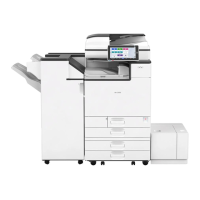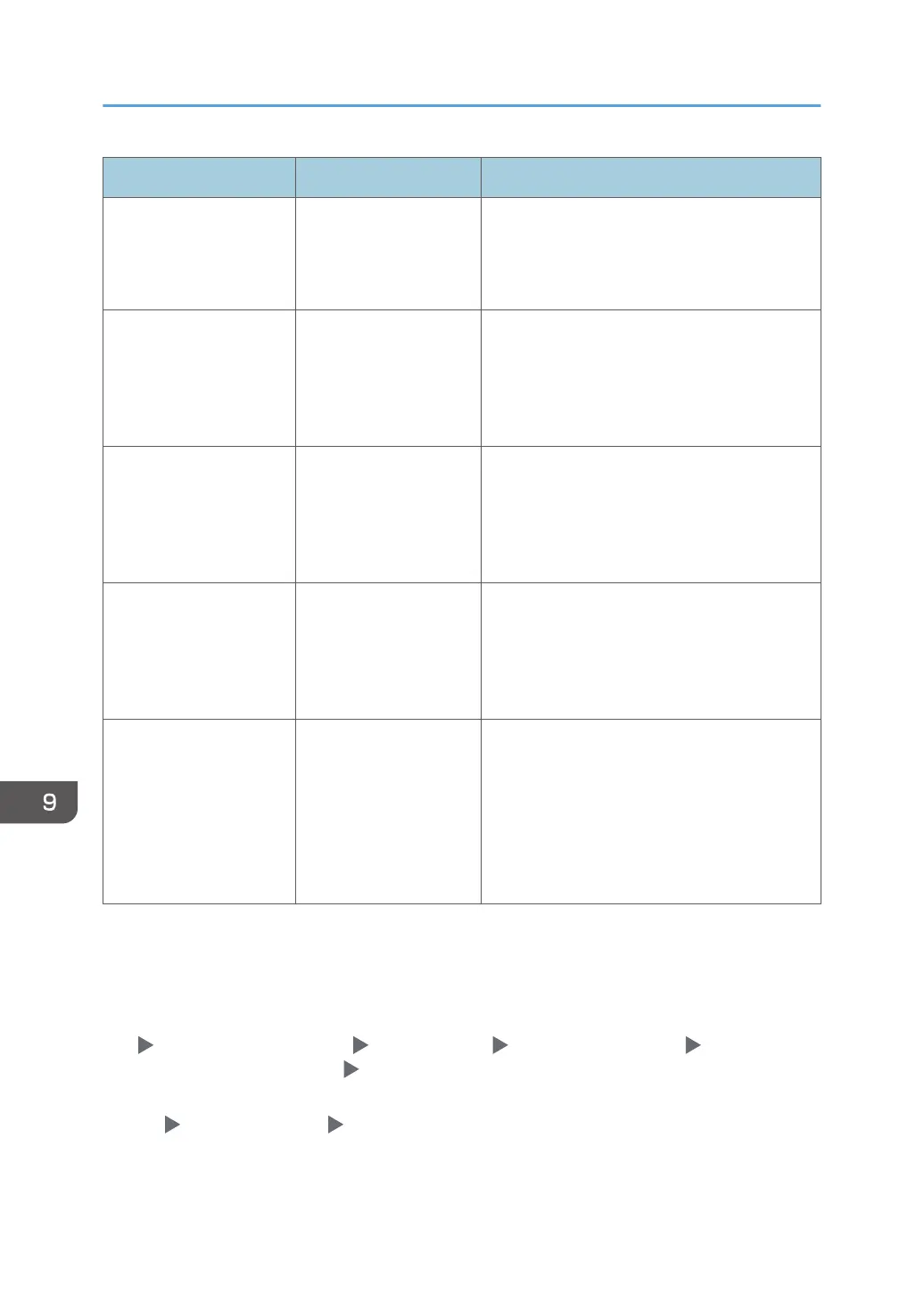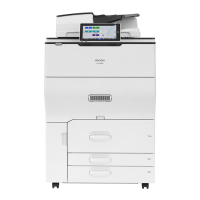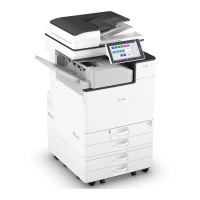Message Cause Solution and reference
"Authentication has
failed."
W/L0606-004
A user name that cannot
be specified in the login
user name was
specified.
Do not use "other", "admin", "supervisor", or
"HIDE*" in user account names.
"Authentication has
failed."
W/L0607-001
Web Image Monitor or
another method was
used to edit or create a
backup of the address
book.
Wait a while.
"Authentication has
failed."
W/L0612-005
The number of users
registered in the address
book has reached the
upper limit, and auto-
registration failed.
Ask the user administrator to delete users that
are no longer needed from the address book.
"Authentication has
failed."
W/L0707-001
Web Image Monitor or
another method was
used to edit or create a
backup of the address
book.
Wait a while.
"Authentication has
failed."
B/W/L09XX-019
Auto-registration of a
user on the server
machine has failed
when authentication
was performed on the
client machine using
Central Management.
• Check the network communication
between the client and server machines.
• Registration cannot be performed while
the address book of the server machine is
being edited.
*1 When obtaining user groups, check the following:
• The user account that can obtain user groups is sAMAccountName (user). Do not use
UserPrincipalName (user@domain.xxx.co.jp) as the user name.
• Check whether the name in "Group" is correctly specified including the case-sensitivity in [Settings]
[Machine Features Settings] [System Settings] [Administrator Tools] tab [User
Authentication Management] [Windows Auth.].
• Select the user in the address book, press [Edit], and then check that [User Management / Others]
tab [User Management] [Available Functions / Applications] check box is cleared.
• Check whether "Global Scope" is specified as the scope of the group in a property for the user
group created in DC, and the group type specified in "Security". Also check whether an account is
9. Troubleshooting
290

